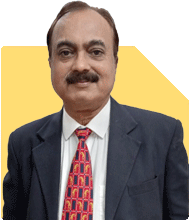Should I change my SIP for 10 years?
Ramalingam Kalirajan |9823 Answers |Ask -Follow
Mutual Funds, Financial Planning Expert - Answered on Jan 16, 2025
He has an MBA in finance from the University of Madras and is a certified financial planner.
He is the director and chief financial planner at Holistic Investment, a Chennai-based firm that offers financial planning and wealth management advice.... more

hello sir...i have done sip in motilal oswal midcap 5k and quant small cap 3k pm keeping in mind the invesment horizon of 10 years so kindly review and advise whether any changes needed ..my age is 44
Mid-Cap Fund
Pros: Mid-cap funds generally offer a good balance between risk and reward. They have growth potential with somewhat less risk than small-cap funds.
Cons: They can be volatile and may not always deliver stable returns in the short run.
Small-Cap Fund
Pros: Small-cap funds have the highest growth potential. Over long periods, they can significantly outperform large and mid-cap funds.
Cons: They are highly volatile. They may be affected by market fluctuations and can deliver poor short-term returns.
Diversification
Both mid-cap and small-cap funds are equity-heavy. While this provides higher returns, it also exposes you to higher risk.
For your age and investment horizon (10 years), this strategy could work, but adding a portion to more stable funds like large-cap or hybrid funds may improve balance.
Suggested Adjustments
Allocate a portion to Large Cap or Hybrid Funds: This would help provide stability to your portfolio.
Diversify across different sectors: It’s advisable to look at sectoral diversity (e.g., pharma, tech, FMCG) to reduce sector-specific risks.
Review Portfolio Performance Annually: Monitor the funds for performance, risk, and changing market conditions.
Final Insights
Your current investment is good for long-term growth but adding diversification can reduce overall risk. Consider allocating a small portion to large-cap or hybrid funds to stabilize returns. Over the next few years, ensure to rebalance the portfolio based on performance and market conditions.
Best Regards,
K. Ramalingam, MBA, CFP
Chief Financial Planner
www.holisticinvestment.in
https://www.youtube.com/@HolisticInvestment
You may like to see similar questions and answers below
Ramalingam Kalirajan |9823 Answers |Ask -Follow
Mutual Funds, Financial Planning Expert - Answered on Apr 27, 2024
Ramalingam Kalirajan |9823 Answers |Ask -Follow
Mutual Funds, Financial Planning Expert - Answered on Apr 30, 2024
Ramalingam Kalirajan |9823 Answers |Ask -Follow
Mutual Funds, Financial Planning Expert - Answered on May 14, 2024
Ramalingam Kalirajan |9823 Answers |Ask -Follow
Mutual Funds, Financial Planning Expert - Answered on May 25, 2024
Ramalingam Kalirajan |9823 Answers |Ask -Follow
Mutual Funds, Financial Planning Expert - Answered on Aug 02, 2024
Nayagam P P |9267 Answers |Ask -Follow
Career Counsellor - Answered on Jul 22, 2025
Nayagam P P |9267 Answers |Ask -Follow
Career Counsellor - Answered on Jul 22, 2025
Pradeep Pramanik |241 Answers |Ask -Follow
Career And Placement Consultant - Answered on Jul 22, 2025
Pradeep Pramanik |241 Answers |Ask -Follow
Career And Placement Consultant - Answered on Jul 22, 2025
Pradeep Pramanik |241 Answers |Ask -Follow
Career And Placement Consultant - Answered on Jul 22, 2025
Pradeep Pramanik |241 Answers |Ask -Follow
Career And Placement Consultant - Answered on Jul 22, 2025
Pradeep Pramanik |241 Answers |Ask -Follow
Career And Placement Consultant - Answered on Jul 22, 2025
Pradeep Pramanik |241 Answers |Ask -Follow
Career And Placement Consultant - Answered on Jul 22, 2025
Pradeep Pramanik |241 Answers |Ask -Follow
Career And Placement Consultant - Answered on Jul 22, 2025
Pradeep Pramanik |241 Answers |Ask -Follow
Career And Placement Consultant - Answered on Jul 22, 2025


















